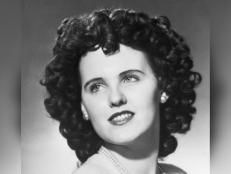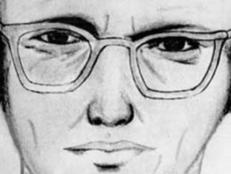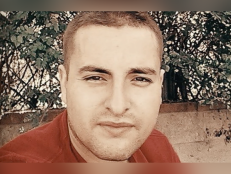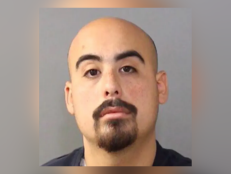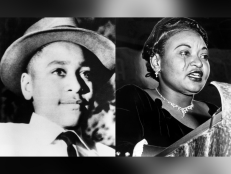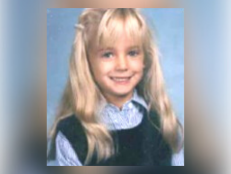The Charles Manson Origin Story

Getty Images/FCI
Three days before he ran away from Boy’s Town, Charles Manson poses in a suit and tie.; Charles Milles Manson at Federal Correctional Institute (FCI) Terminal Island, California on May 2, 1956
Manson: The name itself is synonymous with evil. The entire world was shocked and horrified at the gruesome murders that Charles Manson’s followers carried out. The tumultuous 1960s and the era of hippies and free love were wiped out with the brutal Tate-LaBianca murders in Los Angeles in August 1969.
But where did the evil originate? What twisted, dark path led a 34-year-old ex-convict to command a group of drug-addled young men and women to commit gruesome killings? Charles Manson’s life before August 1969 was one filled with crime and depravity, one that set the stage for the most shocking murders that America had ever seen.
Manson was born on November 12, 1934, in Cincinnati, Ohio. The name on his birth certificate was “no name Maddox,” and his mother, Kathleen Maddox, was only 16 years old when she gave birth to him. There was no father listed on Manson’s birth certificate, and uncertainty has clouded the man’s true identity for years. The little boy took the surname Manson when his mother married a man named William Manson.
There are many rumors that Manson’s mother was a prostitute, but she was never arrested for that particular crime. She was, however, arrested for a bungled robbery and sent to prison when Manson was only five years old.
Manson spent part of his childhood in McMechen, West Virginia, on the banks of the Ohio River. He lived there with his aunt and uncle while his mother served her prison sentence. The young boy was trouble from the very start.
Even as a young boy, Manson was very manipulative and was able to get other children to bend to his will. He recruited fellow students to beat up boys he didn’t like, and, when confronted by teachers, would claim that the aggressors did these acts on their own free will. This theme would become prominent in Manson’s life, especially after his arrest for the Tate-LaBianca murders in 1969. Even if Manson was punished and beaten for his misbehavior, he continued with his mischievous ways.
Manson was reunited with his mother after her three-year prison term, and the two bounced around, living in run-down motel rooms. Manson’s bad behavior escalated, and soon he was stealing. His mother grew weary of trying to control her wayward 12-year-old son, and she turned him over to social services.
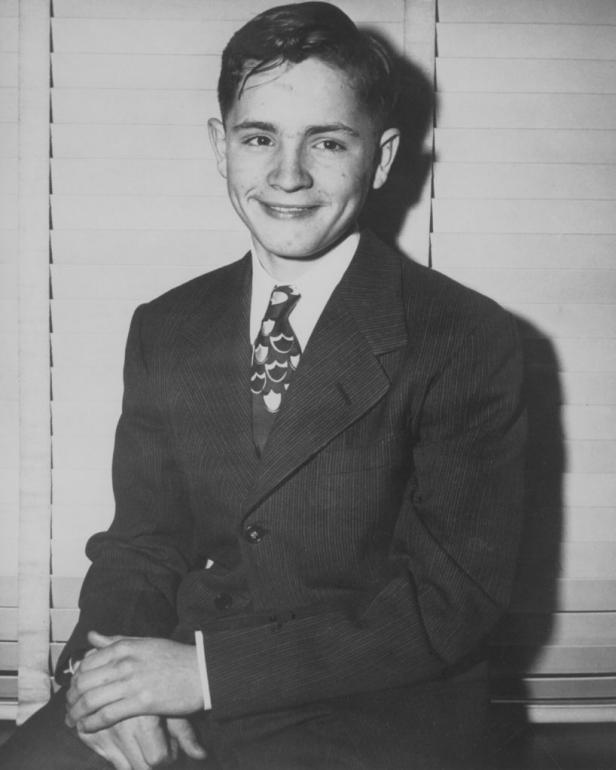
Getty Images
Three days before he ran away from Boy's Town, Charles Manson poses in a suit and tie.
Young Manson was sent to the Gibault Home for Boys in Terre Haute, Indiana. Here, the boy claimed that the institution was filled with violence, intimidation, and rape. He escaped from the home in 1951 but was eventually captured in Utah. Manson never gained a legitimate foothold in decent society, and he was caught in a cycle of crime, incarceration, and either escape or parole.
From 1951 until 1954, he spent time in reformatories and prisons in Washington, D.C., Virginia, and Ohio. His outwardly good attitude won him parole in May 1954 and he returned to West Virginia. But Manson’s freedom would be short lived.
When he was 19, he married a woman named Rosalie Willis. Manson worked odd jobs and continued to steal to support himself. In 1955, Manson and his wife drove across the country in a stolen car. He was arrested in Los Angeles and received five years probation. He then failed to appear in court in California for another charge and was arrested again in March 1956 in Indiana. This time there would be no probation. Manson was sentenced to three years in federal prison in California.
Manson served about two and a half years, was paroled in ’58, and then worked as a pimp on the outside in Los Angeles. He was arrested again in June 1960, this time in Texas for crossing state lines for the purpose of prostitution. Manson’s parole was once again revoked, and he was sent to a federal penitentiary in Washington state.
During this prison stretch, Manson was turned onto Dale Carnegie’s popular book How To Win Friends and Influence People, a groundbreaking study in how to convince people to do what you want. Manson’s manipulative and controlling tendencies were considerably heightened by the book. He also further honed his skills of deception and control by studying Scientology behind bars.
Manson was also exposed to new music group the Beatles behind bars in 1964, and became obsessed with their music and their fame. Hoping for something similar for himself, he learned to play guitar in prison and began writing his own songs.
On March 21, 1967, Manson was released from prison at the age of 32. By this time, he had spent over half of his life in prisons and other institutions.
Manson walked into a completely new world when he headed for San Francisco. Societal norms had shifted dramatically, and young people were flocking to cities to live an uninhibited life filled with drugs, sex, and freedom. Manson, a master manipulator from his many years in correctional facilities and his studies, saw this newfound youth subculture not as something to join, but as something to take advantage of. Which he ultimately did, with deadly results.
Manson met the first member of what became his “Family” in April 1967 in Berkeley, California. For the next 28 months, the Family continued to grow, and his unwavering control over a group of lost young people became absolute. Their descent into drugs and madness culminated in two nights of murder in Los Angeles in August 1969.
In 1969, when word of his evil deeds reached his hometown of McMechen, West Virginia, one of his cousins said:
“We were all very sad and horrified, but not surprised. Once you really got to know Charles, anything awful that he did was no surprise.”
Manson will spend his 83rd birthday, on November 12, in Corcoran State Prison in central California the same way he has spent every day since his arrest in December 1969: behind bars waiting for death.
To learn more about Charles Manson, watch Investigation Discovery’s Manson: The Prison Tapes on ID GO now!
Watch Now:

